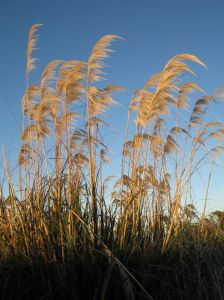
It’s the season of the elements. Winter is a time when the weather looms large in our consciousness, making us worry about the perennials and plan for the annuals that will soon come. Here, a mild winter fades into spring, another season of blustery wind and weather.
You can fight against the weather, but in the long run, the weather tends to win. That’s why it’s best to work with the weather and create a garden that works well with your local weather conditions. That way, you’ll have fewer winter worries and more time to enjoy the delights of the season!
How can you work with your weather? First of all, know your zone. Zone maps of North America will tell you where you live and what climatic zone that is in. Let the zones guide you as you determine whether a plant is winter hardy in your area. If you push the envelope with zones, be prepared to do a lot of extra work to coddle those plants through the winter – or bring them indoors if possible!
Water is a prominent element around here in the fall, winter and spring time. Before you do extensive planting, watch the water in your garden. After a rain, walk around the garden and note where the water pools. In the summer, walk around your garden and note the driest parts of the garden. Plant accordingly. If an area of the garden is really, really wet all year, plant a rain garden. If it’s really dry and warm next to the house, that would be a good place for succulents. If you’re feeling ambitious, you can also use your understanding of water in your garden to ferry the water around, creating new channels where you want it to go.
Wind is another big factor on your property, especially if you have trees. In our garden, the summer wind comes down from the mountains around 6 pm, providing a welcome breeze on hot days. We are relatively sheltered from big winds, but we do have a large tree behind us, one with a root system that is relatively shallow. The wind also moves the leaves off the trees and into the garden, providing mulch. Keep track of the seasonal wind patterns on your property, and you’ll know where to create a windbreak and where the leaves will fall.
Image Credit: [mattosaur4]

